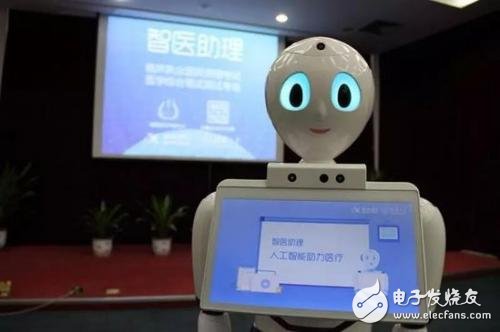Recently, the "Intelligent Assistant" robot from the University of Science and Technology has officially begun its internship in the Fuyang District of Hefei, supporting grassroots general practitioners with daily medical tasks. This marks a significant step in integrating AI into healthcare at the community level.
Developed jointly by Keda Xunfei and Tsinghua University, the "Intelligent Assistant" is an AI-based diagnostic support system. It can quickly generate electronic medical records based on doctor-patient conversations and provide preliminary medical assessments. After the AI gives a diagnosis, doctors review and confirm it before accessing the patient's medical history through the "smart assistant." They can also check similar cases, clinical guidelines, and appropriate medications for symptom management.
According to reports from the Science and Technology Bureau, the "Intelligent Assistant" automatically generates electronic medical records during doctor-patient interactions and extracts key health information from these exchanges. This streamlines the documentation process and ensures accuracy.
Leveraging cognitive intelligence technologies, the system has analyzed a vast amount of medical data, including textbooks, clinical guidelines, and case studies, to build a comprehensive medical knowledge base. This enables the AI to assist doctors in differential diagnosis, ultimately improving the quality and efficiency of medical treatment.
For patients with chronic conditions and other high-risk groups, the "Intelligent Doctor Assistant" automatically follows up according to the family doctor’s schedule. It helps track patient health and manage their records, enhancing coordination between healthcare providers and improving overall public health outcomes.
Notably, the "Intelligent Assistant" robot recently passed the national written exam for the Physician Qualification Examination with a score of 96, exceeding the passing line. This makes it the first AI robot in China to pass the national medical licensing exam, highlighting its advanced capabilities in medical knowledge and reasoning.

The success of the "Intelligent Assistant" reflects the remarkable progress made by the University of Science and Technology in two key areas: knowledge acquisition and application.
First, in terms of knowledge learning, the system uses "multi-semantic deep learning" algorithms to extract and represent medical concepts from a wide range of sources, such as five-year medical textbooks, clinical guidelines, and classic cases. This allows the machine to build a rich and structured medical knowledge base.
Second, in applying this knowledge, the AI employs multi-scale fusion reasoning techniques, including "keypoint semantic reasoning," "context semantic reasoning," and "evidence chain semantic reasoning." These enable the system to perform multi-level reasoning across different levels of medical content, making it more accurate and reliable in its recommendations.
Lu Xiaoliang, deputy general manager of Keda Xunfei Medical, described the AI-driven diagnostic model envisioned by the university as follows: During doctor-patient communication, voice is converted into text, and key information is extracted. This is then combined with machine learning, medical image analysis, and deep learning decision-making to offer insights and support for doctors' diagnoses and treatments.
This innovative model is already being implemented through the "Flying Doctor Assistant" system.
The University of Science and Technology has been rapidly advancing in the medical field. In June 2016, Keda Xunfei partnered with Anhui Provincial Hospital to establish the "Medical Artificial Intelligence Joint Laboratory." This collaboration leveraged the university's technological innovations and the hospital’s medical resources to conduct joint research.
A year later, they launched the "Anhui Provincial Wisdom Hospital," which is integrated with the Anhui Medical Imaging Cloud Platform and the Remote Consultation Platform of the Provincial Hospital. It now connects to hospitals at the county level across the province.
The smart hospital has deployed several AI-powered products, including the intelligent medical guidance robot "Xiao Medicine," the AI medical imaging diagnostic system, outpatient voice electronic medical records, voice assistants for oral and ultrasound exams, and cloud-based mobile medical workstations. These tools are transforming the way healthcare is delivered, making it more efficient and accessible.
loose tube fiber optic cable,loose tube fiber,fiber optic cable loose tube,loose tube
Guangzhou Jiqian Fiber Optic Cable Co.,ltd , https://www.jqopticcable.com